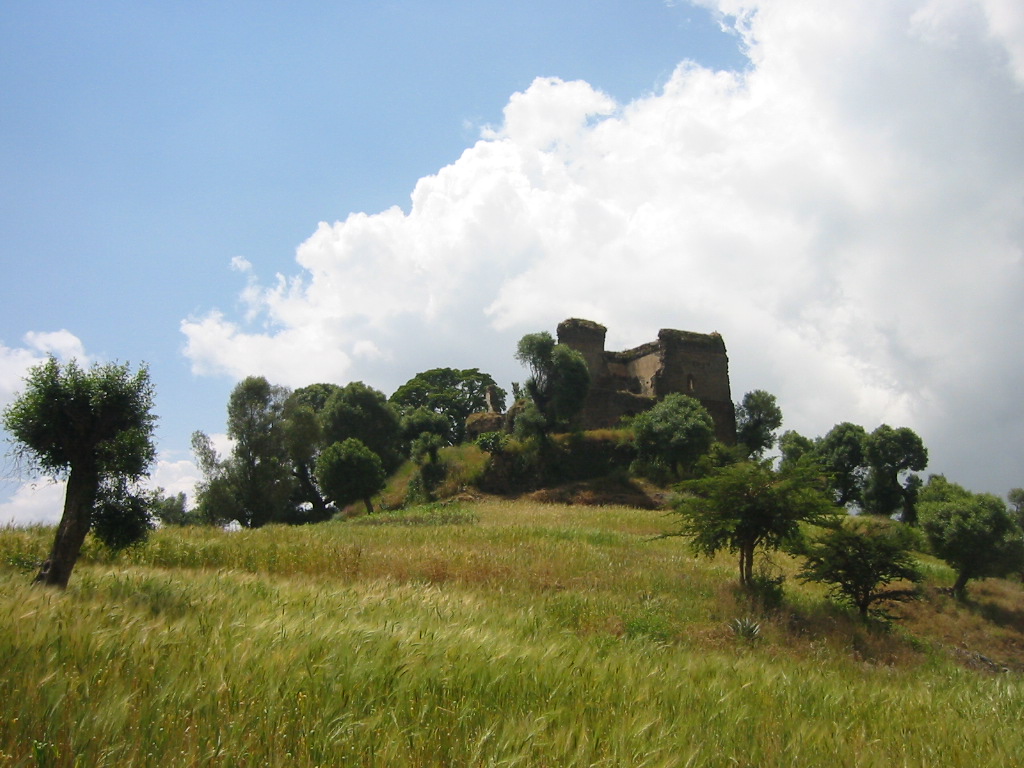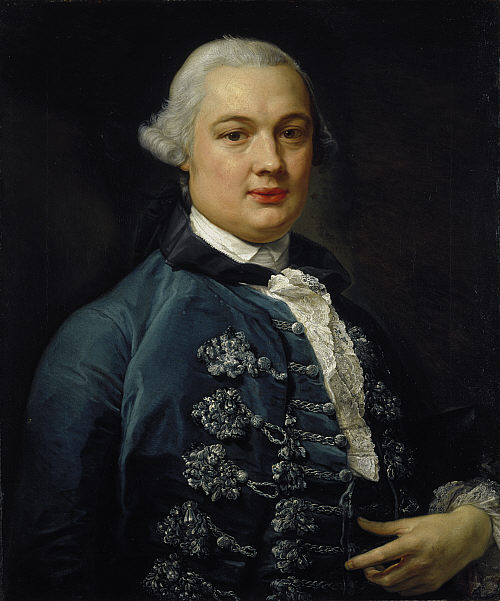|
Badi I
Badi I (1611/12 – 1616/17), also known as Badi el Kawam, was a ruler of the Kingdom of Sennar. During his reign, Sennar was at peace with its neighbor, Ethiopia. The Ethiopian ''Royal Chronicles'' mention that Emperor Susenyos of Ethiopia responded to the gift Badi's predecessor had sent him by sending to Sultan Badi bracelets of gold and a gold-mounted saddle. However, according to James Bruce, Badi found insult in the ''negarit'' which Emperor Susenyos had sent his father, Abd al-Qadir, interpreting it as a symbol that Sennar was a dependency of Ethiopia. This led him to sending an insulting present to Susenyos—two old, blind and lame horses—then followed up the insult by sending his retainer Nile Wed Ageeb to raid Ethiopian territories. Susenyos met this threat by making a separate treaty of peace with Wed Ageeb, who went over to the Ethiopian side. The hostilities between the two kingdoms increased when the governor of the Mazaga, Alico, who was a servant of Emperor Susen ... [...More Info...] [...Related Items...] OR: [Wikipedia] [Google] [Baidu] |
Kingdom Of Sennar
The Funj Sultanate, also known as Funjistan, Sultanate of Sennar (after its capital Sennar) or Blue Sultanate due to the traditional Sudanese convention of referring to black people as blue () was a monarchy in what is now Sudan, northwestern Eritrea and western Ethiopia. Founded in 1504 by the Funj people, it quickly converted to Islam, although this embrace was only nominal. Until a more orthodox Islam took hold in the 18th century, the state remained an "African empire with a Muslim façade". It reached its peak in the late 17th century, but declined and eventually fell apart in the 18th and 19th centuries. In 1821, the last sultan, greatly reduced in power, surrendered to the Ottoman Egyptian invasion without a fight. History Origins Christian Nubia, represented by the two medieval kingdoms of Makuria and Alodia, began to decline from the 12th century. By 1365 Makuria had virtually collapsed and was reduced to a petty kingdom restricted to Lower Nubia, until finally disapp ... [...More Info...] [...Related Items...] OR: [Wikipedia] [Google] [Baidu] |
Ethiopia
Ethiopia, , om, Itiyoophiyaa, so, Itoobiya, ti, ኢትዮጵያ, Ítiyop'iya, aa, Itiyoppiya officially the Federal Democratic Republic of Ethiopia, is a landlocked country in the Horn of Africa. It shares borders with Eritrea to the north, Djibouti to the northeast, Somalia to the east and northeast, Kenya to the south, South Sudan to the west, and Sudan to the northwest. Ethiopia has a total area of . As of 2022, it is home to around 113.5 million inhabitants, making it the 13th-most populous country in the world and the 2nd-most populous in Africa after Nigeria. The national capital and largest city, Addis Ababa, lies several kilometres west of the East African Rift that splits the country into the African and Somali tectonic plates. Anatomically modern humans emerged from modern-day Ethiopia and set out to the Near East and elsewhere in the Middle Paleolithic period. Southwestern Ethiopia has been proposed as a possible homeland of the Afroasiatic langua ... [...More Info...] [...Related Items...] OR: [Wikipedia] [Google] [Baidu] |
Susenyos Of Ethiopia
Susenyos I ( gez, ሱስንዮስ ; circa 1571-1575 – 17 September 1632), also known as Susenyos the Catholic, was Emperor of Ethiopia from 1606 to 1632, and a member of the Solomonic dynasty. His throne names were Seltan Sagad and Malak Sagad III. He was the son of '' Abeto'' Fasil, as well as the grandson of ''Abeto'' Yakob and the great-grandson of Dawit II. As a result, while some authorities list Susenyos as a member of the Solomonic dynasty, others consider him—rather than his son, Fasilides—as the founder of the Gondar line of the dynasty (which is, however, ultimately a subset of the Solomonic dynasty). The life of Susenyos is known through his chronicle, written by several official writers (''sehafe te’ezaz''). The Jesuits, who were closely associated with Susenyos’s reign, also left numerous documents on their mission in Ethiopia. Manuel de Almeida, a Portuguese Jesuit who lived in Ethiopia during Susenyos' reign, described the emperor as tall with the fea ... [...More Info...] [...Related Items...] OR: [Wikipedia] [Google] [Baidu] |
James Bruce
James Bruce of Kinnaird (14 December 1730 – 27 April 1794) was a Scottish traveller and travel writer who confirmed the source of the Blue Nile. He spent more than a dozen years in North Africa and Ethiopia and in 1770 became the first European to trace the origins of the Blue Nile from Egypt and Sudan. Early life James Bruce was born at the family seat of Kinnaird, Stirlingshire, and educated at Harrow School and Edinburgh University, and began to study for the bar, but his marriage to the daughter of a wine importer and merchant resulted in him entering that business instead. His wife died in October 1754, within nine months of marriage, and Bruce thereafter travelled in Portugal and Spain as part of the wine trade. The examination of oriental manuscripts at the Escorial in Spain led him to the study of Arabic and Ge'ez and determined his future career. In 1758 his father's death placed him in possession of the estate of Kinnaird. To North Africa On the outbreak of war ... [...More Info...] [...Related Items...] OR: [Wikipedia] [Google] [Baidu] |
Abd Al-Qadir II
Abd al-Qadir II was a ruler of the Kingdom of Sennar (1603/4 - 1606). According to James Bruce, he was the son of Unsa I, whom Bruce describes as "a weak and ill-inclined man". While he was ruler of Sennar, Emperor Susenyos of Ethiopia sent to Abd al-Qadir a ''nagarit'', or kettle-drum, richly decorated with gold, which was one of the traditional emblems of an Ethiopian negus or king; in return, Abd al-Qadir sent Susenyos a trained hunting falcon. Shortly after this diplomatic exchange, he was deposed by his brother Adlan. At some point following his deposition from the throne in 1606, Emperor Susenyos of Ethiopia appointed him governor of Chilga (also known as Ayikel Ayikel (Amharic: አይከል), also known as Chilga is a town in western Ethiopia. Located in the Semien Gondar Zone of the Amhara Region, it has a latitude and longitude of with an altitude of 2146 meters above sea level. The settlement is situat ...), an important market town near the Ethiopian border with Sennar. ... [...More Info...] [...Related Items...] OR: [Wikipedia] [Google] [Baidu] |
Adlan I
Adlan I (reigned 1606 - 1611/12) was a ruler of the Kingdom of Sennar. He was the son of Ayat, although James Bruce writes he was the son of Unsa I and the brother of Abd al-Qadir, whom he deposed and exiled from Sennar. Adlan was, in turn, deposed by his nephew Badi. During his reign, Sennar was at peace with its neighbor, Ethiopia Ethiopia, , om, Itiyoophiyaa, so, Itoobiya, ti, ኢትዮጵያ, Ítiyop'iya, aa, Itiyoppiya officially the Federal Democratic Republic of Ethiopia, is a landlocked country in the Horn of Africa. It shares borders with Eritrea to the .... The Ethiopian ''Royal Chronicles'' mention that Adlan sent a team of fine horses to Emperor Susenyos as gifts. H. Weld Blundell, ''The Royal chronicle of Abyssinia, 1769-1840'' (Cambridge: University Press, 1922), p. 530. References Rulers of Sennar 17th-century African people {{Africa-royal-stub ... [...More Info...] [...Related Items...] OR: [Wikipedia] [Google] [Baidu] |
Rabat I
Rabat I (1616/7 - 1644/5) was a ruler of the Kingdom of Sennar. According to James Bruce, he was the son of Badi I. He intrigued in Ethiopian politics a number of times. Early in his reign he detained the Coptic bishop Abba Yeshaq, who had passed through Sennar on his way to Ethiopia.Richard Pankhurst, ''The Ethiopian Borderlands'' (Lawrenceville: Red Sea Press, 1997), p. 369. Pankhurst refers to him as "Erubat". A later act was his attempt to convert Saga Krestos, the son of Emperor Yaqob of Ethiopia, to Islam, which resulted in Saga Krestos' departure.E.A Wallis Budge. ''A History of Ethiopia: Nubia and Abyssinia'', 1928 (Oosterhout, the Netherlands: Anthropological Publications, 1970), p. 373. In response to a slave raid by Emperor Susenyos of Ethiopia Susenyos I ( gez, ሱስንዮስ ; circa 1571-1575 – 17 September 1632), also known as Susenyos the Catholic, was Emperor of Ethiopia from 1606 to 1632, and a member of the Solomonic dynasty. His throne names were Seltan ... [...More Info...] [...Related Items...] OR: [Wikipedia] [Google] [Baidu] |
Rulers Of Sennar
A ruler, sometimes called a rule, line gauge, or scale, is a device used in geometry and technical drawing, as well as the engineering and construction industries, to measure distances or draw straight lines. Variants Rulers have long been made from different materials and in multiple sizes. Some are wooden. Plastics have also been used since they were invented; they can be molded with length markings instead of being scribed. Metal is used for more durable rulers for use in the workshop; sometimes a metal edge is embedded into a wooden desk ruler to preserve the edge when used for straight-line cutting. in length is useful for a ruler to be kept on a desk to help in drawing. Shorter rulers are convenient for keeping in a pocket. Longer rulers, e.g., , are necessary in some cases. Rigid wooden or plastic yardsticks, 1 yard long, and meter sticks, 1 meter long, are also used. Classically, long measuring rods were used for larger projects, now superseded by ta ... [...More Info...] [...Related Items...] OR: [Wikipedia] [Google] [Baidu] |
17th-century African People
The 17th century lasted from January 1, 1601 ( MDCI), to December 31, 1700 ( MDCC). It falls into the early modern period of Europe and in that continent (whose impact on the world was increasing) was characterized by the Baroque cultural movement, the latter part of the Spanish Golden Age, the Dutch Golden Age, the French ''Grand Siècle'' dominated by Louis XIV, the Scientific Revolution, the world's first public company and megacorporation known as the Dutch East India Company, and according to some historians, the General Crisis. From the mid-17th century, European politics were increasingly dominated by the Kingdom of France of Louis XIV, where royal power was solidified domestically in the civil war of the Fronde. The semi-feudal territorial French nobility was weakened and subjugated to the power of an absolute monarchy through the reinvention of the Palace of Versailles from a hunting lodge to a gilded prison, in which a greatly expanded royal court could be more easily k ... [...More Info...] [...Related Items...] OR: [Wikipedia] [Google] [Baidu] |




